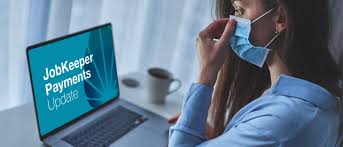What happens when Jobkeeper ends?

What happens when JobKeeper ends? What do you need to do know to plan for the ending of Jobkeeper?
JobKeeper 1.0 ends on 27 September and has been a lifesaver for businesses and employees. With many businesses and employees concerned about ongoing COVID-19 outbreaks and the much discussed “Cliff” at the end of the initial JobKeeper round, the Federal Government has announced an extension. JobKeeper 2.0 is a more targeted scheme with reduced payments designed to assist not-for-profit entities and businesses who continue to be significantly impacted by COVID-19.
For many it will not be a return to business as usual, especially with continuing deterioration of events in Victoria and NSW which will have a significant impact on the National Economy.
Given that the ongoing impacts of COVID-19 on business will be “Sector based” it will be imperative to understand the ongoing issues of cash flow and business growth specific to individual businesses.
“Beyond JobKeeper, there are several other factors that will come together later in the year to put more pressure on businesses. These include the gradual tightening of the ATO’s stance on PAYG tax deferrals; the end of bank loan interest pauses, state payroll tax and land tax concessions, and rental relief measures; and the end of the temporary suspension of insolvency trading laws.” (Australian Institute of Company Directors)
Planning for business recovery:
- Refit the business cost base. What is my cash-flow situation like now and what will it be like after stimulus ends?
- Look at the supply chain and sure up supply lines. Is my business reliant on overseas or interstate suppliers? Can I source locally and economically?
- Decide which stakeholders are the most important and plan accordingly (customers, suppliers, staff). How can I reach my customers? Can all my suppliers still provide their products and services? Can I afford to keep staff on post-JobKeeper? (Understand your staffing numbers and how many to carry once the Government subsidies are no longer available.)
- Ensure you have enough capital in place to rebuild the business. Can I meet deferred payments? (e.g. rent, mortgage) Do I have the money to pay tax when it falls due?
Communication through this phase is critical. Communicating with Staff, Suppliers and Customers will ensure a more streamlined and controlled return to more normal business. Maintain a continuous line of communication with your business advisors and accountant. They will assist with any sector-specific assistance that may be available.
Further help:
If you’re not sure on what to do next, feel free to contact Marsh & Partners to discuss the options. You can reach us on (07) 3023 4800 or at mail@marshpartners.com.au.

